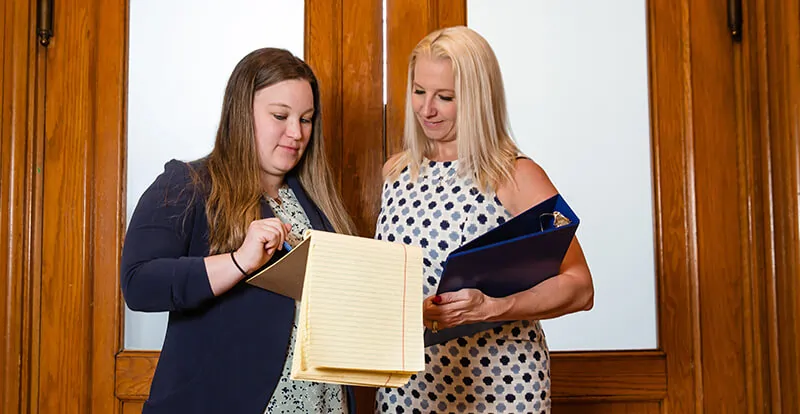How to Document Domestic Violence in a Custody Case
When you’re preparing for a custody battle and domestic violence has played a role in your relationship, the way you document and present that abuse can significantly impact the outcome of your case. At O’Connor Family Law, we’ve supported countless survivors through the emotionally charged and complex process of seeking custody and protection for their children in the wake of abuse.
In Massachusetts, courts take allegations of domestic violence very seriously, but they require evidence. Knowing how to properly document domestic violence can strengthen your case and protect your children from being placed in a dangerous or unsafe environment.
What Counts as Domestic Violence in Family Court?
In the context of a custody case, domestic violence can include:
- Physical abuse (hitting, slapping, restraining, shoving)
- Emotional and psychological abuse (gaslighting, threats, isolation, intimidation)
- Sexual abuse
- Verbal abuse and coercion
- Financial control or manipulation
- Child abuse or exposure to violence
It’s important to understand that you do not need visible injuries to be considered a victim of abuse. Courts are increasingly recognizing the damaging effects of coercive control and non-physical violence, especially on children.
Why Documentation Matters in a Custody Case
Massachusetts family courts base custody decisions on the best interests of the child. When abuse is present, it becomes a critical factor in determining parenting time, legal custody, and safety planning.
However, allegations alone are not enough. You need clear, organized, and credible documentation to support your claims.
Start a Written Record — Immediately
Start keeping a journal or written log of all incidents of abuse. This should include:
- Dates and times
- Descriptions of the incident
- Location
- Witnesses (if any)
- Your emotional or physical reaction
- Impact on your child (i.e., what they saw, heard, or how they reacted)
👉 Tip: Write these entries as soon after the incident as possible, and store them in a safe, secure location (or share with your attorney).
Save Texts, Emails, and Voicemails
Abusers often leave a digital trail of threatening, manipulative, or harassing behavior. Do not delete these messages—preserve them.
- Take screenshots of texts, especially those that are threatening, controlling, or admit to certain actions.
- Back up emails that show patterns of abuse, gaslighting, or attempts to control.
- Save voicemails and transcribe them when possible.
Be sure your digital evidence is organized and date-stamped. Your attorney can help you determine which pieces are most persuasive in court. We suggest getting these to a safe place just in case your abuser takes your technology or goes in and deletes anything.
Gather Photos and Physical Evidence
If you have visible injuries, damage to property, or other physical indicators of abuse, take photos. Make sure your photos:
- Are time-stamped (most smartphones do this automatically)
- Clearly show the injury or damage
- Include a brief written explanation of what happened
Examples: bruises, broken furniture, holes in walls, damaged phones or doors, etc.
File Police Reports or Request Restraining Orders
Police and court documentation carries significant legal weight in custody cases.
- If you feel safe doing so, file a police report after incidents of abuse
- Consider seeking a 209A Abuse Prevention Order (restraining order) in Massachusetts
- Request copies of incident reports or restraining order affidavits from the court
Even if the police do not arrest your abuser, a record of the incident helps establish a pattern.
Keep Medical or Counseling Records
If you’ve received treatment for physical injuries or spoken with a therapist about the abuse, these records can corroborate your claims.
- Obtain copies of medical reports, discharge summaries, or injury evaluations
- Ask your therapist for a written summary (not full therapy notes) confirming sessions and general themes discussed
Don’t worry—you don’t need to hand over every private detail. Your attorney can help protect your privacy while presenting what the court needs to see.
Witness Statements Can Be Powerful
If anyone has seen the abuse firsthand or noticed the effects on you or your children, ask them if they’d be willing to provide a statement.
Examples of potential witnesses:
- Neighbors
- Teachers or school counselors
- Family members
- Babysitters or daycare workers
- Friends who have seen abusive behavior
A signed, dated affidavit from a credible witness can be helpful to utilize to show you have evidence behind you; however, if you have to go to court, the affidavit will not be enough – the witness will need to testify to have the Judge take the information in as evidence.
Use a Secure Communication Platform
If your court case allows (or orders) continued communication with your ex, use a platform like OurFamilyWizard or TalkingParents, which tracks all messages and timestamps them. These tools can limit abusive language and provide a complete log for the court.
Final Thoughts: You Are Not Alone
At O’Connor Family Law, we understand how hard it is to gather evidence when you’re just trying to survive. But you do not have to face this battle alone.
We are fierce, trauma-informed advocates with deep experience in protecting survivors and their children in Massachusetts custody cases. When you work with us, we’ll help you build a strong, evidence-based case that not only tells your story, but protects your future. Contact us now to learn more.


